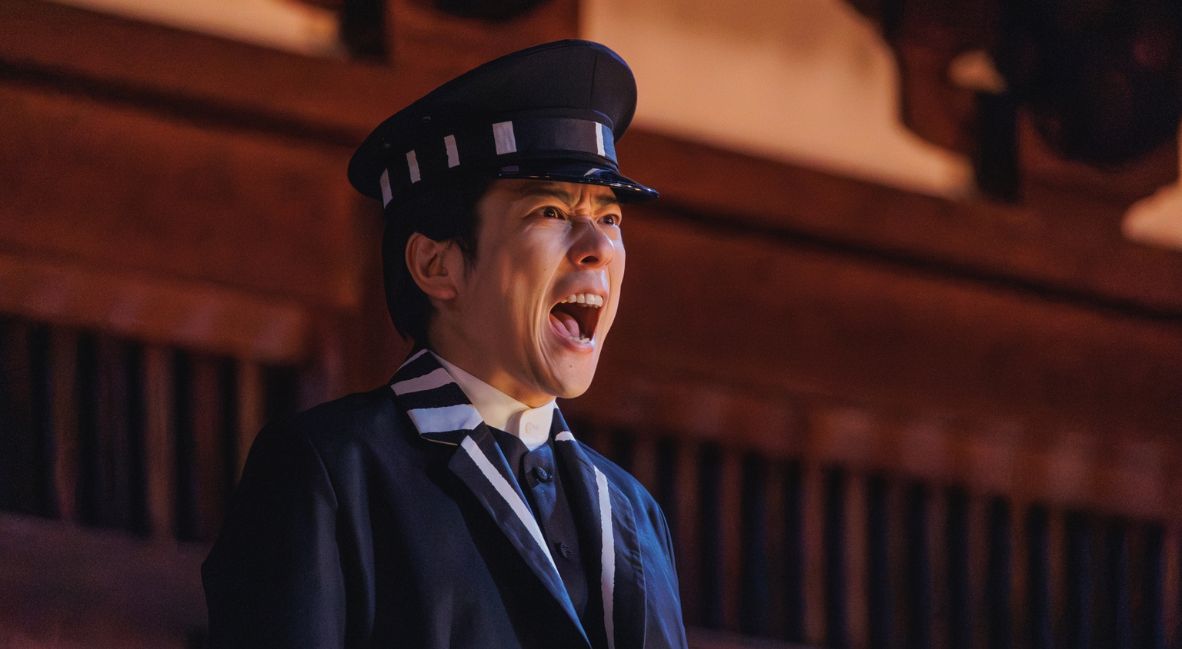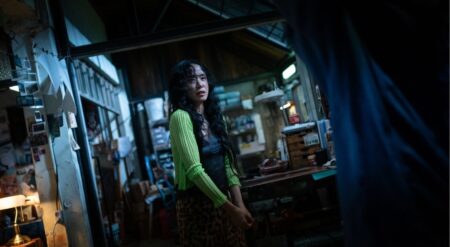Netflix presents the adaptation of the bold historical fiction, battle royale-style manga story for Last Samurai Standing, written by Shogo Imamura and illustrated by Katsumi Tatsuzawa at Kodansha. Directors Michihito Fujii, Kento Yamaguchi, and Toru Yamamoto captain this six-episode season. But it’s truly producer, lead actor, and action choreographer Junichi Okada who champions the creative vision behind the show.
The story begins in Japan in 1878, 10 years after the glory days of the samurai. Stripped of their identity and status and no longer permitted even to carry swords, the samurai struggle to survive in this new era. As the wealth gap widens and a deadly cholera outbreak spreads, a chance at salvation arrives: an invitation to participate in a tournament called Kodoku, for the chance to win a grand prize of ¥100,000.
The battle begins in Kyoto and ends in Tokyo, but the catch is that only one player will survive out of 292 fighters. The challenge was clear: take each other’s wooden tags and make it all the way to Tokyo.
The winner would get the prize. Shujiro Saga joins the contest to help his family, and ends up protecting a defenseless young girl who also joined, named Futaba Katsuki (Yumia Fujisaki). The two form a pact ahead of the long, treacherous journey across the Tokaido.
Last Samurai Standing is a period piece about trying to survive in a new era where you don’t belong.

Last Samurai Standing Episode 1, “Kodoku”, is a near-perfect pilot because of the balance between action set pieces, lore building, and emotional beats. It begins by introducing the series protagonist Shujiro in the battle to end the Shogunate reign at the end of the Boshin War.
The oner as Shujiro moves through the battlefield gathers frenetic energy up close and personal from Shujiro’s perspective, building up to a sullen end of cannon and gunfire. This final battle of the war sets up the rest of the series’ story because it shows Japan’s shift from swords to Snider rifles.
Okada showcases his stunt knowledge in major action sequences, best seen in Episodes 3, “Gate,” and Episode 4, “The Mastermind.” The forest fight in Episode 3 resembles the hilly forest area where Boromir makes one final stand to protect the hobbits in The Lord of the Rings: The Fellowship of the Ring.

The running and chaos in this forest chase in Last Samurai Standing contrasts with the wide-scale fighting at the end of Episode 1, when all 292 fighters clash in Kyoto at Tenryuji Temple. To Imamura and Yamada’s credit, the camera work has to be precise to capture this whole run-and-slash fight choreography. Something about this show’s close-up tracking shots makes the fights feel more intimate and personal.
In Episode 4, the teahouse fight resembles a lot of close-quarter fights seen in Jackie Chan films—whether that’s in Drunken Master or Rush Hour 2. In a similar fashion, almost a hundred warriors brawl in this cramped teahouse space. The claustrophobia is real because the camera tracks the fight as if it’s a GoPro camera attached to one of the scrappers within the brawl.
A highly technical shot in this long cut fight is when the camera follows a fight happening between shelves; the camera goes through the shelves and into the next focal fight beat. This means there were most likely two camera operators who had to hand off the camera mid-action without cutting.
Last Samurai Standing excels when it comes to action.

Where FX’s Shogun excels at the drama and heart behind the characters, Last Samurai Standing brings electric sword skirmishes with enough thoughtful character writing. Fujii and Yamaguchi write the various samurai-turned-shizoku fighting one another in a way that audiences can easily understand why each of them fights. Shujiro’s motivations to join the contest are clear and simple from the start: to help his sick wife and child.
As the season progresses, more of his story unfolds and intertwines with many of these warriors—adding depth to who is behind the competition, and who Shujiro was in the past. Additionally, Okada should be praised for his performance of showing a samurai suffering from PTSD.
Not a lot of media depict the traumas of samurai warriors dealing with PTSD this intimately. In fact, a lot of the main characters in the contest show how they all dealt with the aftermath of the samurai ban.
This Netflix series doesn’t let the battles get in the way of the emotion.

Episode 2, “Awakening,” perfectly shows how to quickly build out a character’s backstory and make it matter, even though this character is only in one or two episodes. This character’s backstory and fight also flesh out the other fighter opposite them because it shows their power-scaling abilities and their style of fighting.
Within Episode 2, there are examples of great music and emotional beats. When Futaba performs a ritual dance against the rising morning sun, the greens of the surrounding foliage, the water, and the red torii gate colors pop.
Cinematographers Keisuke Imamura and Hiroki Yamada deserve much praise for capturing these beautiful moments, as well as the intense fights. The music by Takashi Ohmama and score by Alan Tyler ratcheted up the stakes of fights not only in this episode, but in tense moments where characters are being stalked too.

While Shujiro and Futaba are the two serious lead characters, Masahiro Higashide’s Kyojin Tsuge is a perfect balance to their glum demeanor. Even though Kyojin’s playful, charming personality exudes loudly externally, this is another great character design trait for him—being more like a ninja than a traditional samurai.
He’s going to be a fan-favourite character for his comedic lines, but also his serious ones when he calls out Shujiro on his morals: “You know, it’s not that you can’t kill. It’s that you choose not to.” This is only one example of the many character dynamic complexities Last Samurai Standing explores.
From the acting, cinematography, to the stunt choreography, Last Samurai Standing is nearly flawless in every regard. The nitpicks mostly revolve around the fact that this show has a TV budget versus a film, meaning the show creators have to carefully pick where the higher budget moments and set design go.
Overall, the set design is amazing because they’re shooting in real locations across Kyoto. However, there are bird’s-eye view shots of some locations where it’s a CGI camera that zooms into the real shot. The CGI/VFX doesn’t fluidly blend, but it isn’t something to detract from the great storytelling.
Last Samurai Standing balances history and entertainment near-perfectly.

From a writing perspective, the only aspect of this contest that suspends reality is how the competition organizer’s guards/soldiers track the fighters if they lose their wooden tag. They didn’t have the technology at the time for a nationally televised event, or it didn’t seem like a wide-scale event with a huge number of volunteers keeping a close eye on the contestants. However, these are mainly minor complaints.
Last Samurai Standing presents a firm grasp of balancing enthralling history, entertainment, and emotional story beats. The series does not overstay its welcome by slowly building up the reveals or truths behind the events happening unbeknownst to the protagonists.
Shogun and the video game Rise of the Ronin are great companions for understanding the historical contexts further. For viewers looking for a quick, gripping story, this is a perfect piece of entertainment—easily bingeable in a day and will leave you starving for more in the second chapter to come.
Last Samurai Standing is streaming now, exclsuively on Netflix.
Last Samurai Standing
-
Rating - 9/109/10
TL;DR
Last Samurai Standing presents a firm grasp of balancing enthralling history, entertainment, and emotional story beats. For viewers looking for a quick, gripping story, this is a perfect piece of entertainment—easily bingeable in a day and will leave you starving for more in the second chapter to come.








